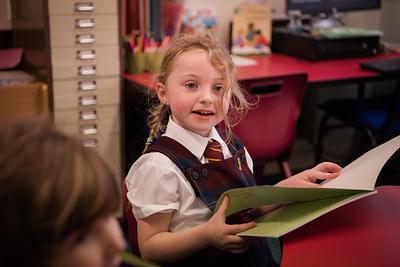Looking for all Articles by Alan Dapré ?
Five things to remember when writing for children
Write children's books that inspire and excite your readers

Children enjoy well-crafted tales that tap into their sense of fun, curiosity and passion for new ideas. I love writing for them because their enthusiasm is infectious and motivating. Young readers are refreshingly honest. There is no hiding place for an author. You get back what you give.
I have written plays, TV shows, picture books and stories. Regardless of genre, each project is a journey of discovery. Along the way, I've picked up things that have helped smooth my path. No one wants an uphill slog! Here are my top tips for writing for children.
Immerse yourself in your chosen genre
I used to wonder if reading the work of other writers would slow my creative flow. That I’d pick up bad habits as well as good ones. I’ve come to realise it’s a great way to gain an appreciation of how each format works. Find the similarities and differences in their structure, plotting, rhythm and pace. Distil each story to its essence - perhaps a single line. Apply anything that resonates with you and leave the rest to flow over you. Trust your first impressions. Take note of things that catch your eye and consider why.
Observe the ways children (your audience) interact with the world
Many books for children feature children. Your writing will be more natural if you are aware of the rhythms and patterns that youngsters adopt when they interact with each other. Children often say the first things that come to mind. They repeat phrases - and rework their sentences as they speak. Try writing short, staccato sentences or long rambling ones just to get a feel for pacing. Reflecting on your childhood memories can also help draw out an authentic voice.
Buy a load of sticky notes
When I am working up my latest story idea I concentrate on ACTION. If characters are not doing something to move the plot on they shouldn't be there. Stories are about DOING. I sketch the main narrative arc on a series of sticky notes that can be easily rearranged, drawn over, replaced, etc. You can do the same using virtual notes on a computer desktop or tablet screen. It helps to arrange your notes into chapters, and use headings like - 'This is the chapter where X discovers Y and gives it to Z'. Clarity is everything.
Write as much as you can - and LOVE your work
Your story belongs to you until you decide to share it with the world. Then everyone will have a view. So it's important to make it the best it can be. Your young audience will thank you for it, as will any agents, publishers and editors who take a look. Be bold in the way you play with words and themes. Children like to be surprised. Identify your story's strengths. Any uncertainty will show in the plotting. Avoid agonising over every word. Instead, write your narrative in big chunks then go back and edit - because it’s easier to cut content than add it. Trust your instinct – and keep old versions in case you want to bring an idea back.
Don’t give up
Getting your writing published is tough. All authors face rejection at some point. The successful ones have something in common. They never give up. They may not have written the best kids’ book ever, but simply approached the agent/publisher at the right time. The key to success is building relationships. Get known as a hardworking, imaginative writer and your reputation will help you attract more work. When you get rejections – and you will – channel your writing energy into new projects. It's important to talk positively about yourself - and others. Publishers, editors and agents move about, get promoted, even lunch together. Some may even talk about you. You want that to be in a good way.
When you write, magic happens. Doors open. People smile and the world is a better place.
You can quote me on that.
If you're a teacher looking to explore Alan's books in the classroom, Kelpies have a learning resource(this link will open in a new window) to help you introduce Porridge the Tartan Cat to your pupils.